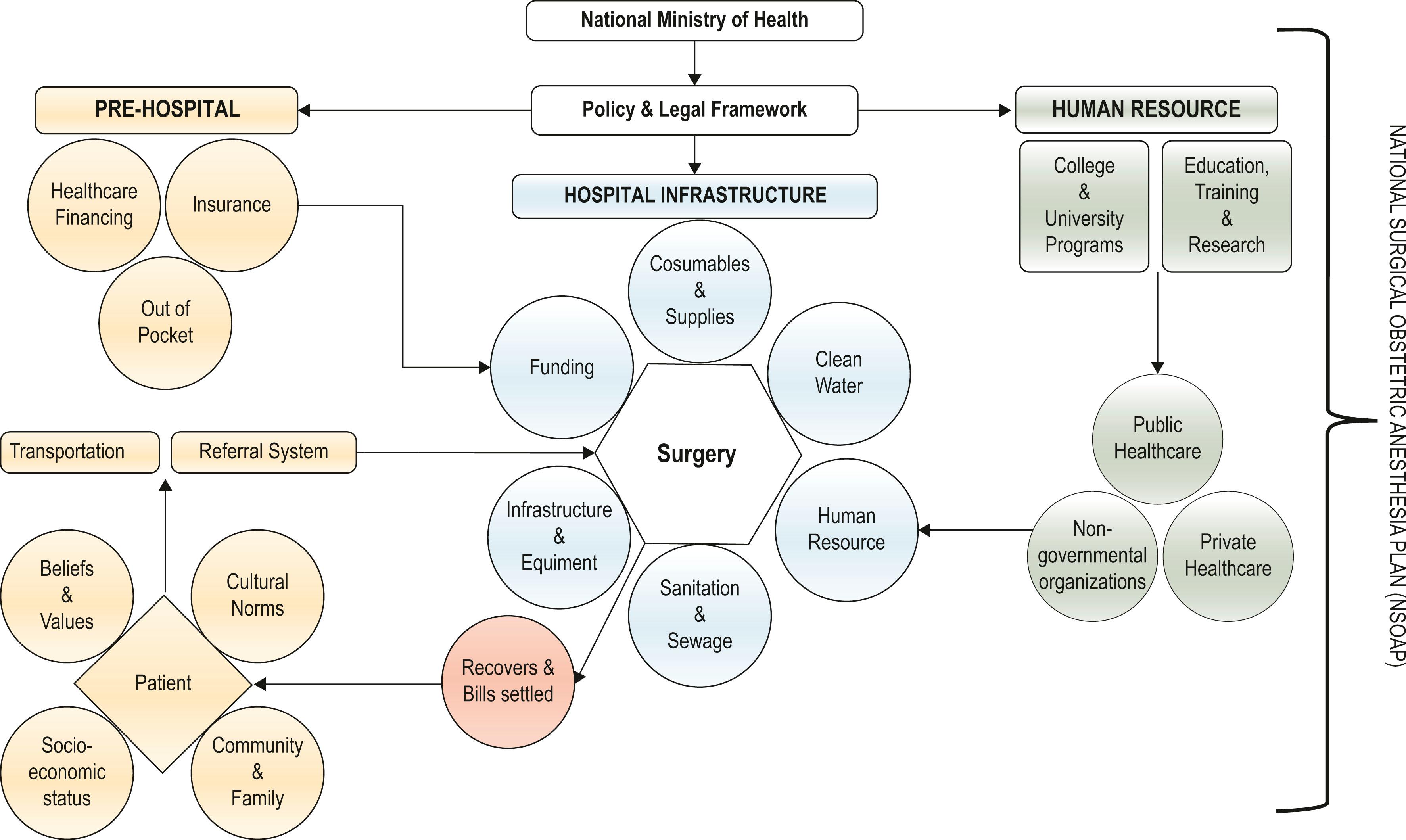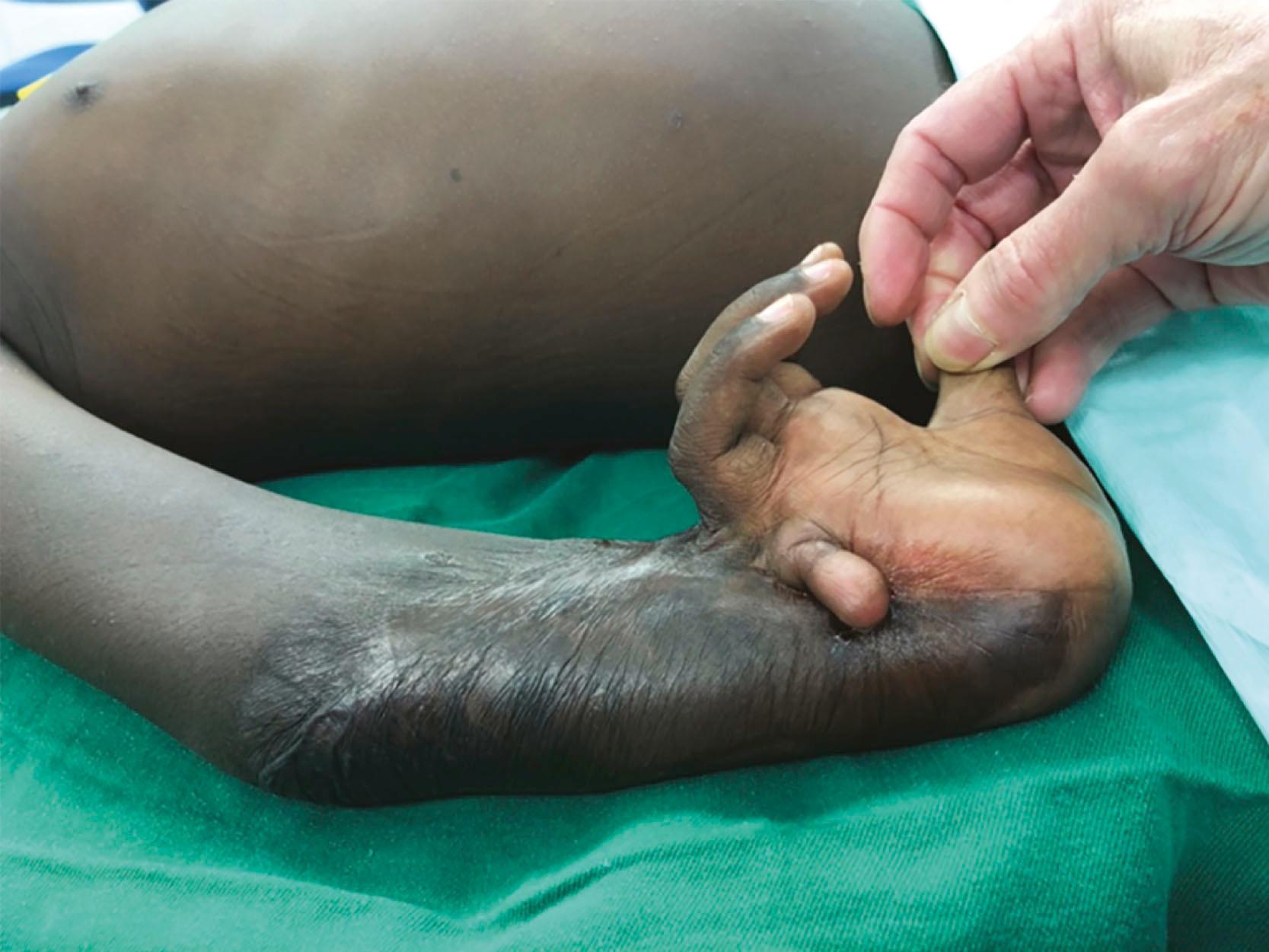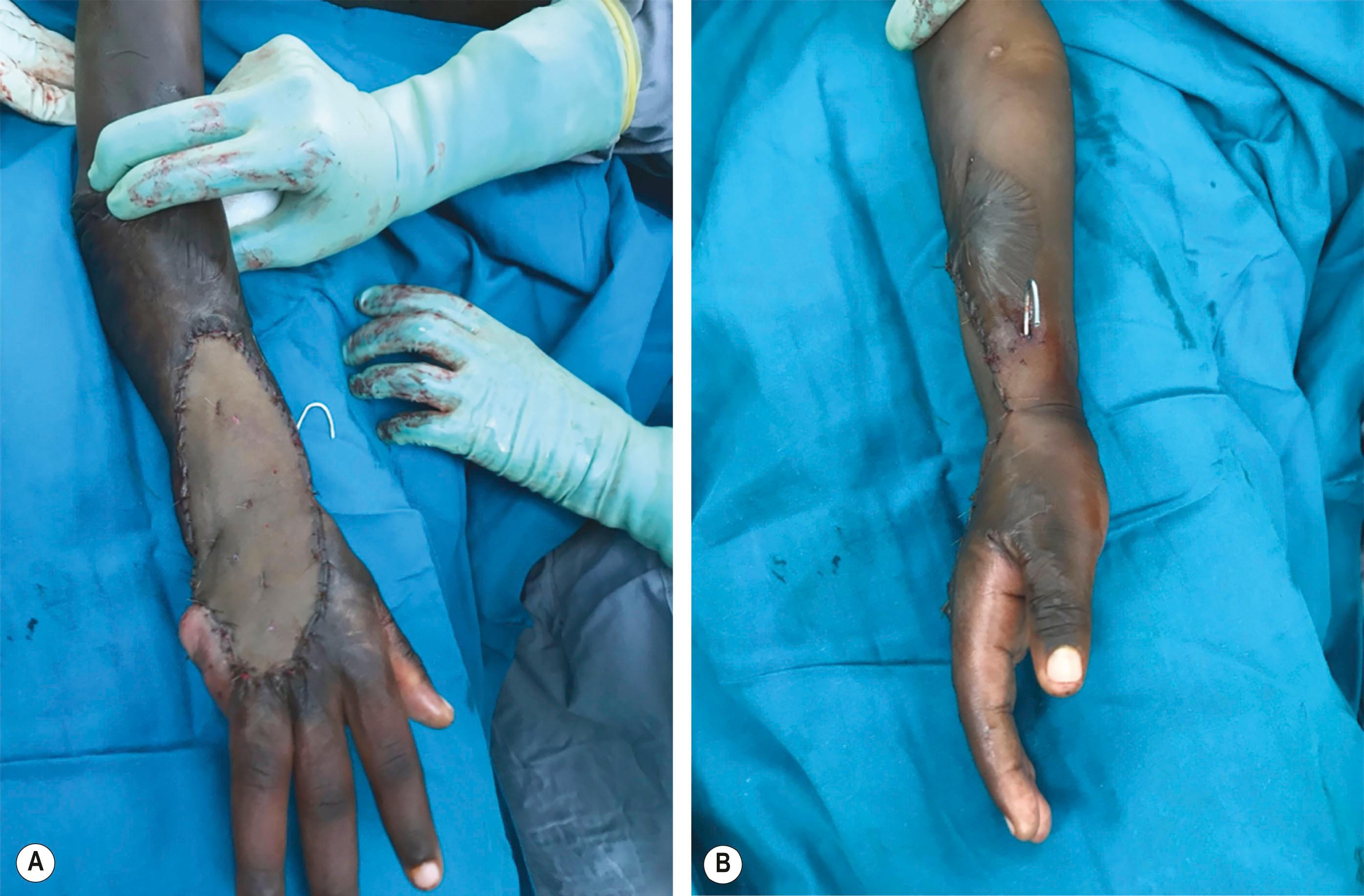Physical Address
304 North Cardinal St.
Dorchester Center, MA 02124
An astounding 5 billion people lack access to safe, affordable, and timely surgical care worldwide. Only one-fifth of the world’s surgeons serve the poorest half of the world’s population. Truche et al . estimated that the number of plastic surgeons in low- to middle-income countries (LMICs) ranged between 0.0073 to 0.0093 plastic surgeons per 100,000 people, in contrast to the 2.18 plastic surgeons per 100,000 people in the United States (a 300-fold difference). In Nigeria, for example, the most populous country in Africa, 1 plastic surgeon serves over 1 million people in a country where burns, trauma, and oncologic cases require substantial care.
This disparity will lead to the untimely death and disability of many of the world’s working population, resulting in the loss of 12.3 trillion dollars of economic productivity. In 2010, an estimated 33% of all deaths worldwide were due to conditions that required surgical care, far surpassing the cumulative number of deaths attributable to HIV/AIDS, malaria, and tuberculosis, despite the latter receiving the majority of foreign aid. The provision of surgical services and economic productivity are linked and up to 2% of economic growth is lost annually due to untreated surgical conditions in LMICs.
The history of plastic surgery involvement in international aid and global health work is long-standing. Since the early mid-twentieth century, reconstructive surgeons have been essential in treating a panoply of surgical conditions from congenital anomalies to devastating traumas as a result of war and conflict. The aftermath of World War II inspired the American Society of Plastic and Reconstructive Surgeons Educational Foundation (PSEF) as a means to support research endeavors and disseminate the knowledge of its constituents. Later, the PSEF collaborated with the relief organization Medical International Cooperation Organization (MEDICO) to facilitate plastic surgeons volunteering in countries abroad. Their commitment towards education during these often self-funded trips taken during the surgeon’s personal vacation time is noteworthy. However, long-term sustainability was lacking. Numerous other non-profit and volunteer-based organizations sprouted shortly thereafter, many with the intention of providing surgical care and training side-by-side. However, the number of trained surgical providers in low- and middle-income countries has yet to mirror the number of surgical volunteers to these regions. A 2016 study found 403 surgical non-governmental organizations (NGOs) operating in 139 low- or middle-income countries, with the majority working in India, Haiti, Kenya, and Ethiopia. Many of these organizations work in silos, missing the opportunity to collaborate and leverage their collective resources. With improved collaboration, coordination, transparency, and ongoing needs assessments rooted in local priorities, NGO resources could be leveraged to create substantial gains in access to care while maintaining financial risk protection for the patient population.
Regardless of the resources employed, a dramatic scale-up of human, physical, and governmental resources in low- and middle-income countries is required to level the gross inequity in access to safe, affordable, and timely surgical care worldwide. In a recent estimation of the required scale-up of surgeons, anesthetists, and obstetricians needed worldwide, authors found that nearly 1 million additional surgeons, anesthetists and obstetricians need to be trained by 2030. Since the publication of these striking figures, there has been a groundswell of momentum towards improving access to safe, affordable, and timely surgical, obstetric, and anesthesia care for all, but significant work is still needed. Tangible actions can be made to increase access to high-quality surgical care and will require contributions from many in the surgical field (nurses, technicians, managers, surgeons, anesthetists, etc.). Those trained in broad, general surgical fields will be needed as well as those trained in more specialized fields like plastic surgery. With thoughtful, ethical, and evidence-based initiatives, everyone can have an impact.
This chapter endeavors to generate a roadmap for engaging in meaningful global surgical collaborations for those new to the field, a reminder of the myriad reasons why to engage in this work for the global surgical veterans, and a call for ethical, sustainable, impactful change to the inequitable access to surgical care worldwide.
Some key definitions for terms appearing in subsequent discussion are given in Box 38.1 .
Global surgery: “A rapidly developing multidisciplinary field aiming to provide improved and equitable surgical care across international health systems.” Further, “global surgery [is] an area for study, research, practice, and advocacy that places priority on improving health outcomes and achieving health equity for all people worldwide who are affected by surgical conditions or have a need for surgical care. Global surgery incorporates all surgical specialties, including obstetric and gynaecological surgery, anaesthesia, perioperative care, aspects of emergency medicine, rehabilitation, and palliative care and nursing and the allied health professions involved in the care of the surgical patient.”
There are a variety of ways to engage in global surgery, and some require little to no travel at all. Increasing access to underserved populations, regardless of location, could be considered “global surgery”. Further, in certain situations, the most impactful way to engage in global surgery might be through advocacy or research as opposed to providing clinical care. Education, advocacy, care delivery, and research are all components of global surgery, and anesthetists, surgeons, allied healthcare workers, nurses, economists, politicians, and students all have the ability to contribute in meaningful ways.
Stakeholder: A stakeholder can be an individual who has an interest or concern in something. Therein, the global surgical stakeholder might include surgeons, patients, hospital administrators, or health policy executives. Stakeholders may be found at the local, regional, or national level, and all contribute a valuable point of view that when taken into consideration may elevate the ability to improve access to effective and quality surgical care.
LMICs and HICs : Countries are classified using the World Bank Atlas method, according to the Gross National Income (GNI) per capita of the country, a reflection of the population income. Low–Middle-Income Countries ( LMICs) have a GNI per capita of $4,95 or less (2020 data), while High-Income Countries ( HICs) have a GNI per capita of $12,696 or more.
Historically, many LMICs were colonized by HICs, and the vestiges of colonialism are pervasive. Global surgeons must proceed with caution to ensure that global surgical efforts do not adopt an intervention approach that mirrors colonialism. Global health is an opportunity to give back, and help build sustainable systems in these counties.
Capacity-building in global surgery : Expanding a local healthcare system’s ability to provide safe, affordable, and timely access to healthcare without the assistance of foreign or donated aid. Capacity-building can focus on workforce expansion, supply chain infrastructure, financial sustainability, or accessible physical resources. It can occur on an individual level, such as training an individual provider, or on an institutional level, such as developing a training program or surgical department. Capacity-building can also include supporting research initiatives, advocacy, and health policies to address unmet needs and reduce health disparities.
Surgical ecosystem : The surgical ecosystem is a complex system within a country, in which a variety of stakeholders interact and use resources, in the pursuit of the provision of timely, affordable, and quality surgical care. Ideally, this journey begins with a sick individual from the community entering into the surgical ecosystem and ends with the exiting of a healthy, productive individual back into the community (see Fig. 38.1 ).
Understanding the context in which the surgeon works is of the utmost importance in creating and sustaining change and impact; this “context” forms the surgical ecosystem within which surgical care takes place ( Fig. 38.1 ).

Healthcare financing is a critical peg within the surgical access conundrum, and therefore part of the “surgical ecosystem”. There are four traditionally described models of healthcare financing systems, although most countries employ a mix of a few, or all. These models define healthcare financing within the countries where they are employed: the Beveridge model (a single-payer national health service, e.g. in the United Kingdom, where the government controls healthcare pricing), the Bismarck model (employers and employees fund the health insurance – social health insurance, in which the government also controls healthcare pricing), the national health insurance model (single-payer national insurance – is a mix of the Beveridge and Bismarck models), and the out-of-pocket model, (the predominant model of healthcare financing in LMICs). While insurance-based healthcare financing is gaining traction in many LMICs, out-of-pocket payments, which have a high risk for catastrophic expenditure on health, constitute 50% of the financing, with the poor, unemployed being more likely to pay out-of-pocket. In a review of equity in healthcare financing in LMICs, Asante et al . found that it benefits the rich more than the poor, but that the burden of financing also falls more on the rich, making access to healthcare difficult for the poor.
The number of plastic surgeons in LMICs is limited; subsequently, plastic surgery is often provided by other surgical specialists including orthopedic, general and maxillofacial surgeons, or medical officers (non-specialist medical doctors). As a part of capacity-building, it is necessary to consider building the skills of non-plastic surgery providers in these environments, until a critical mass of plastic surgeons is achieved.
Burns are a significant cause of preventable morbidity and mortality. The Disease Control Priorities project (DCP3) estimates fire-related burn injuries result in more than 265,000 deaths per year. Furthermore, millions of survivors and their families are adversely impacted by burn-related disabilities. A disproportionate incidence of burns occurs in LMICs, with 95% of fire-related burn deaths occurring in these countries. The majority of burn centers are found in large urban areas. With minimal burn care infrastructure and equipment, including dermatomes and derma-meshers, many patients persist with debilitating contractures that could have been avoided. Such contractures can limit the use of upper and lower extremities, oral competence, ocular protection, and more ( Figs. 38.2 & 38.3 ). Such limitations can prohibit the ability to find gainful employment, and in some cultures can carry significant stigma that leads to societal ostracization. Quality burn care will be provided if the current providers are trained and supported with the necessary resources to optimize wound closure and healing and minimize donor-site morbidity.


Oral-facial clefts are the most common craniofacial congenital anomaly worldwide, with an estimated prevalence of 1 in every 600 live births. Rates of oral facial clefts are high in LMICs, likely due to a lack of folate supplementation, but treatment is often delayed or nonexistent, resulting in significant social stigma to children with clefts. Although cleft care has improved across many LMIC environments because of the concerted effort of a number of advocates, comprehensive cleft care is still an aspiration in many places. A number of NGOs have focused on sustainable models of cleft care, including the training of local surgeons, and funding of cleft surgery, while other efforts have invested in establishing comprehensive cleft care centers. Cleft care is managed by non-plastic surgeons in many countries, and empowering them ensures both access, and sustainability for these countries. Additionally, there are still a large number of clefts that are treated during visiting short-term mission trips. Local surgeons are left to manage the complications after surgery, or the more complex clefts. In a 2016 study, O’Neill et al . found that many surgical centers that are equipped to provide basic surgical care still lacked the resources to provide more specialized care like cleft and cataract surgery, highlighting the need for additional training in these specialized areas.
Become a Clinical Tree membership for Full access and enjoy Unlimited articles
If you are a member. Log in here